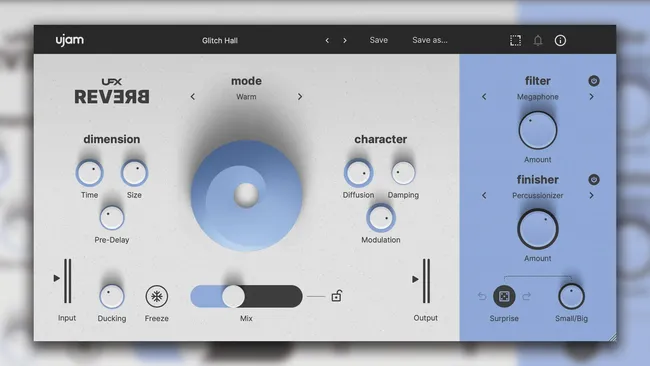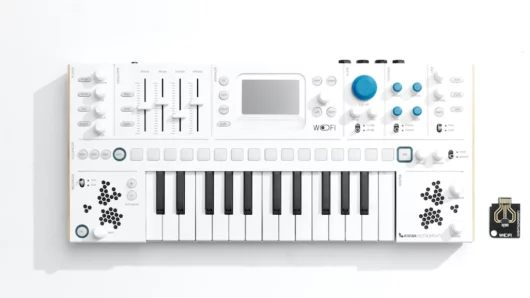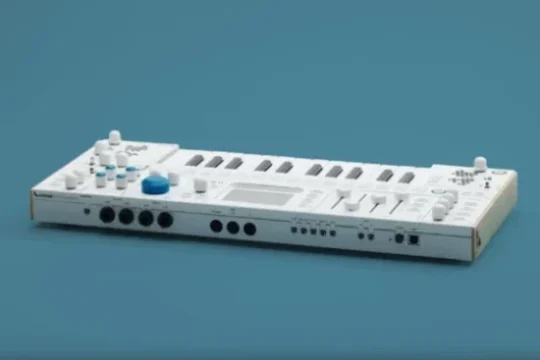Roland Introduces Juno-D Synths For ‘Gigging Musicians & Budding Music Creators’
Roland revamped Juno-D synths are ‘streamlined keyboards for gigging musicians and budding music creators’
Roland’s 2024 synth range is sprawling and can be a little confusing. Between the Aira and Boutique ranges, Fantoms, Junos, Jupiters and JDs, the iconic instrument brand has a multitude of hardware keyboards and modules to choose from, with a fair amount of crossover between models when it comes to the sounds and features on offer.
That picture has just gotten a touch more complicated with the introduction of another new version of an existing keyboard line – the Juno-D. The original Juno-D arrived in the mid-’00s, offering an affordable keyboard-workstation equipped for various styles of aspiring and gigging musicians. The range has evolved over the years, with the last instalments being the Juno-DS range launched in 2015.
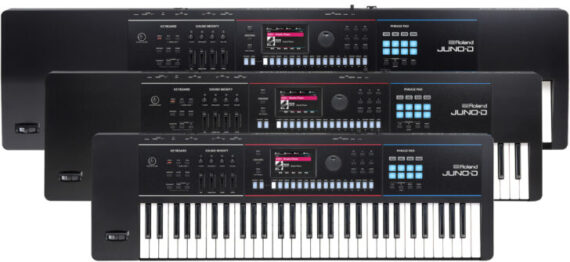
Available in three variations: the JUNO-D6, JUNO-D7, and JUNO-D8. These updated Juno-D models are versatile-looking synth keyboards that borrow numerous features from the top-end Fantom keyboards, albeit at a more accessible price point. Roland describes the range as “streamlined keyboards with powerful features for gigging musicians and budding music creators.This on-the-go keyboard combines pro-grade Roland sounds and easy operation with a mobile design and flexible connectivity for any scenario”.
The Juno-D keyboards are all powered by Roland’s Zen-Core engine, the sample-and-synthesis system behind many of the company’s recent instruments. This gives each instrument access to over 3800 sounds, including staple synth tones, pianos, organs, orchestral sounds, percussion and a variety of classic sounds from Roland’s heritage gear. Sample import also allows users to create and play custom patches.
The Zen-Core ecosystem also allows users to expand the sounds of their hardware instrument via Roland Cloud. By creating an account, Juno-D users can access a selection of free expansion packs as well as purchase themed packs that can be uploaded to the hardware.
The Juno-Ds are lightweight and easy-to-use instruments pitched at aspiring players, small bands and gigging musicians. To that end, the instruments offer a broad range of hands-on controls and can be powered via either a mains input or a USB-C battery pack. The instruments’ USB-C input can also be used to play songs or backing tracks from a smartphone, flash drive or computer. The keyboards also include an integrated audio/MIDI interface.
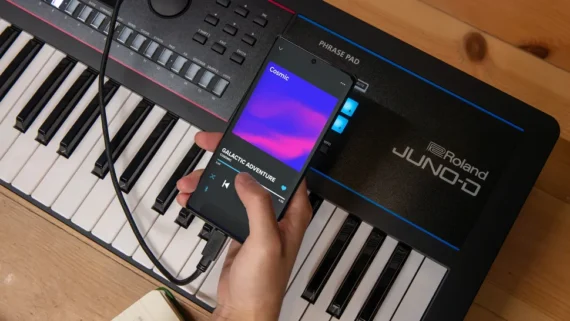
The instruments come equipped with a versatile selection of playing options and tools. The sound engine is multitimbral and the keyboards can be assigned split and dual modes, or what Roland calls a Super Layer, which allows the user to stack and detune multiple instances of a sound. There’s also a multi-track sequencer, arpeggiator and chord mode, plus a system of favourites for quickly accessing sounds.
As well as playing the keyboard sounds themselves, the Juno-Ds feature a mic input that allows users to process their voice with a range of effects, including EQ, compression, auto-pitch and a vocoder.
The three models in the range only differ based on their keyboards, which the range inherits from the top-end Fantom keyboards. The 61-note Juno-D6 and 76-note Juno-D7 are equipped with synth-action keyboards. The Juno-D8 has an 88-note weighted-action keyboard with hammer action.

While much of the sound content here will feel familiar to anybody that’s kept up with Roland’s multiple variations on the Zen-Core keyboard theme, it must be said that these particular configurations look undeniably handy for players working in small bands or playing regular solo gigs.
Roland Juno-D6, Juno-D7, and Juno-D8 are available now priced at $899.99, $1,149.99, and $1,299.99. Find out more at the Roland website.
